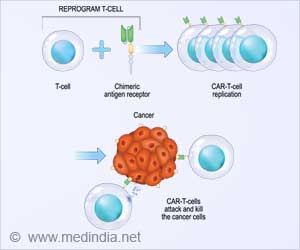WHO-initiated World No Tobacco Day, raises awareness on tobacco-related health risks, and promotes national and global intervention for sustainable growth.
- The World No Tobacco Day is observed on 31st May each year.
- Campaigns are carried out by the WHO Members States which strive to ensure that preventable tobacco-induced diseases are high up in the public and governmental consciousness.
- The WNTD 2017 theme is ‘Tobacco - A Threat to Development’. The aim is to raise awareness on the national and global developmental burden of the tobacco industry.
World No Tobacco Day 2017: ‘Tobacco - A Threat to Development’
Rampant tobacco use is a worldwide phenomenon. With the theme ‘Tobacco - A Threat to Development’, the WNTD 2017 aims to shed light on the global tobacco crisis, with particular reference to the threats that tobacco poses, to public health and economy, and to the sustainable development of countries. Apart from discussing the global risks associated with tobacco, the WNTD campaigns will also throw light on governmental policies and public measures that could be adopted to stop tobacco use and consumption.The WNTD 2017 goals include:
- Emphasizing the associations between tobacco usage, tobacco control and sustainable growth.
- With a view to the 2030 Sustainable Development Agenda, countries worldwide will be encouraged to prioritize tobacco control.
- Motivating the WHO Member States, as well as the civil society to address and fight the interventions of the tobacco industry in political affairs, thereby strengthening national tobacco control action.
- Encouraging national, regional and global scale public and partner engagement for the implementation of developmental strategies prioritizing tobacco control action.
- Stressing the creation of a sustainable, tobacco-free world, by inspiring individuals never to take up tobacco smoking, or by motivating them to kick this pernicious habit.
What is meant by tobacco control?
Effective tobacco control mainly refers to raising awareness on the health risks of citizens, emphasizing the preventable nature of tobacco-induced diseases, ensuring governmental and public strategies in controlling the spread of tobacco supply and use.It also takes into account the growing risks to the environment posed by the tobacco industry. The amount of money invested in the growth, manufacture and trade of tobacco products can be diverted to far more useful, and much needed health care programmes. Heavier tobacco taxes could also be channelized for use in health and developmental strategies.
The 2030 Sustainable Development Agenda incorporates some substantial targets to accelerate global tobacco control efforts. Apart from initiating responses to this 2030 agenda, governments of all countries also have to implement the guidelines set out in the WHO Framework Convention on Tobacco, an international treaty with 179 countries and the European Union, as part of their national responses to sustainable development.
A Tobacco-free World for Every Individual
Another major aspect of tobacco control action is the awareness among the general public regarding the severe health threats associated with tobacco use. It is vital to realize that second-hand smoke is almost as harmful as smoking first hand. Cigarette smoke contains toxic chemicals and carcinogenic elements such as tar, nicotine, arsenic, carbon monoxide, and cyanide. Therefore, the non-smoking members of a family, could be exposed to as much harm as the smoker himself, through passive smoking. A vow to live healthy, and create a better world, both for oneself, as well as for one’s friends and family, could serve to promote a tobacco and disease-free world.What are the health risks associated with tobacco use?
Raw tobacco leaf is used for most tobacco products that are meant to be smoked, chewed, sucked or snuffed. All tobacco products, irrespective of the form, contain carcinogenic substances which can have severe long-term implications on a person’s health.Tobacco consumption can cause different types of cancer. These include cancers of :
- Lung
- Mouth
- Throat
- Esophagus
- Liver
- Kidney
- Bladder
- Stomach
- Pancreas
- Colon
- Acute Myeloid Leukemia
What are the effects of tobacco on Women?
In women, tobacco smoking can cause irreversible damage. Women smokers are at a 60% higher risk of infertility than non-smokers. Smoking could be responsible for miscarriages, and also interferes with IVF-induced births, reducing the chances of a live birth by 34%.Further, women who smoke often give birth to babies with lower birth weight. Studies have revealed that prenatal exposure to tobacco smoke can later manifest itself in children with behavior disorders.
Important Tobacco facts in India and the World
- The WHO estimates a global overall of 7 million deaths associated with tobacco usage each year. This staggering figure is expected to reach 8 million by 2030. Developing countries have a burden of 80% of premature tobacco deaths.
- 2-4% of worldwide deforestation occurs annually in order to provide land for tobacco growing. Deforestation, in turn, is hazardous to environmental, and hence human, health.
- Tobacco growth and consumption play an active role in the vicious cycle of poverty. Tobacco is consumed in massive amounts by the lower economic sections of society. These people tend to spend freely on tobacco products to feed their addiction. In the process, essential health and educational needs are not met. And their poverty not only continues, but worsens.
- The tobacco epidemic contributes to national financial burdens. Countries have to spend enormous amounts on tobacco related diseases and conditions, which could cause a deficit in other health care costs.
- In 2012, about 30% deaths in India, were tobacco related.
- Beedi, a form of thinly wrapped tobacco flakes, has been used by the poorer strata of the Indian society, since ages. These constitute about 80% of the tobacco market in India.
- Tobacco use among Indian men is estimated at 48% and in women, it is around 20%.
- More than 274.9 million adults in India used tobacco products, in 2012.
- Globally, India comes second only to China, in production and consumption of tobacco.
References:
- World No Tobacco Day 2017 video - Tobacco: a threat to development - (http://www.who.int/tobacco/wntd/en/)
- World No Tobacco Day, 31 May 2017 - (http://www.who.int/campaigns/no-tobacco-day/2017/event/en/)














